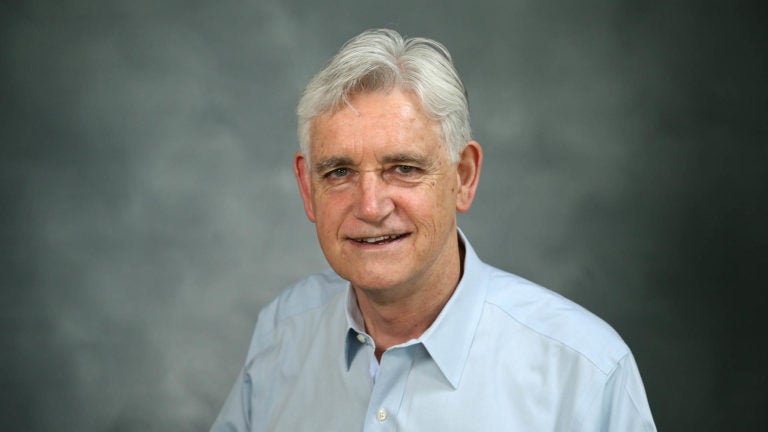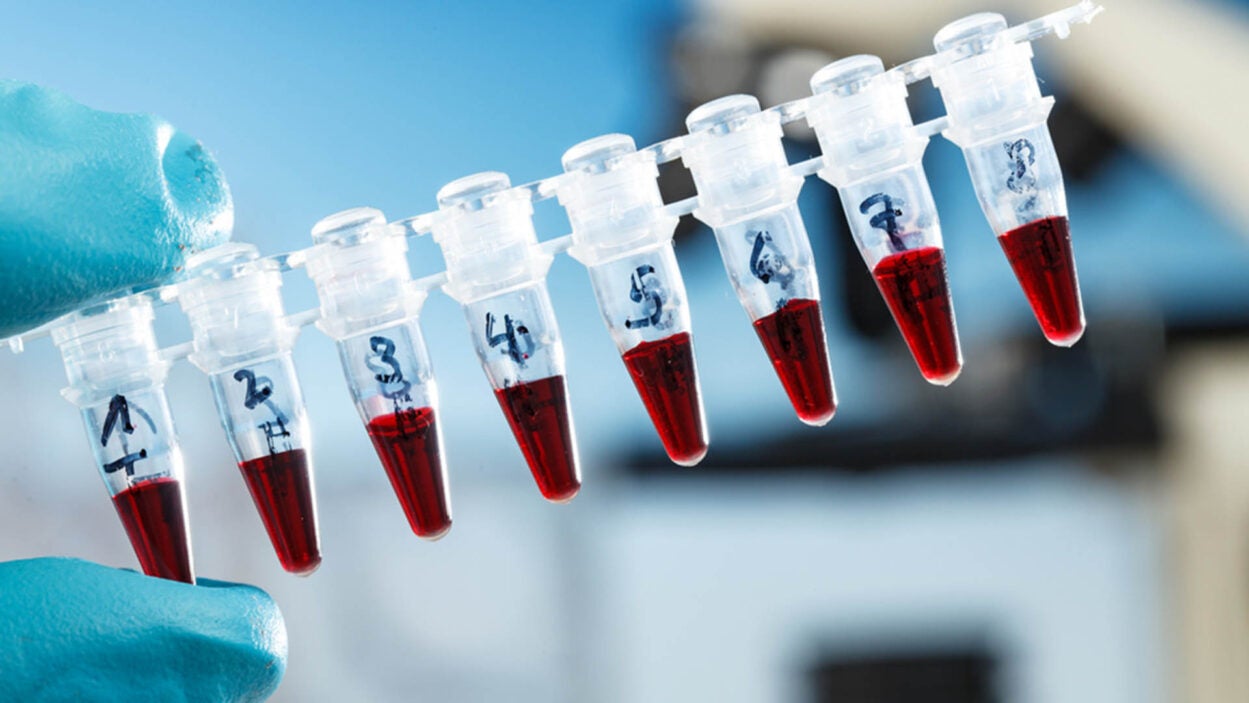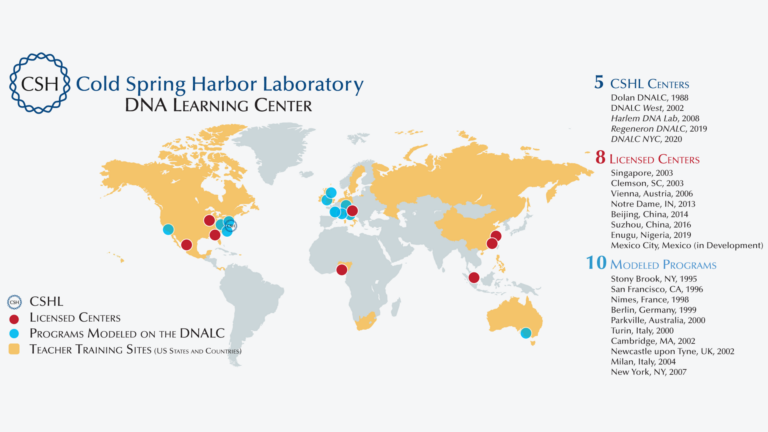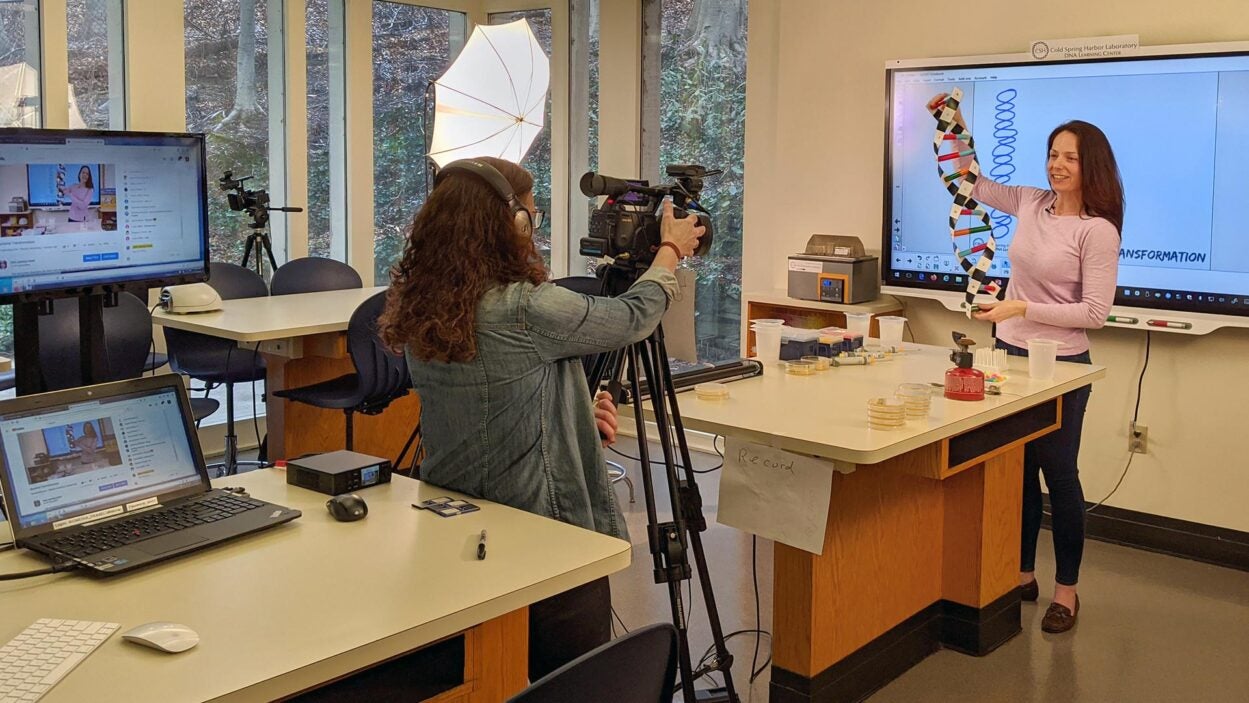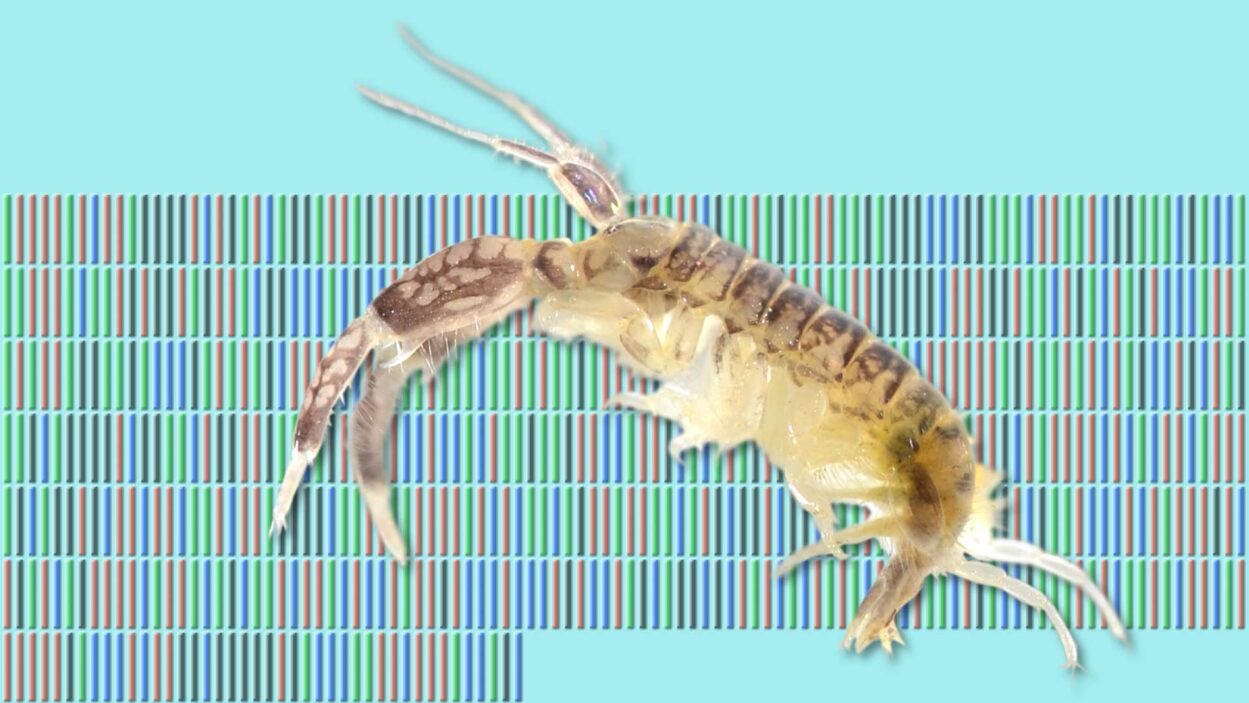President’s Essay 2019
Last December, I attended a joint meeting of the American Society of Cell Biology (ASCB) and the European Molecular Biology Organization in Washington, D.C., to deliver the keynote address. One of the best things about scientific meetings is the opportunity to encounter ideas you might not otherwise be exposed to, and I always make it a priority to attend talks beyond my own fields of expertise. In this case, a highlight of the meeting for me was a talk about the importance of active learning in STEM education given by Mary Pat Wenderoth, a biology lecturer at the University of Washington and founder of the Society for the Advancement of Biology Education Research.
Wenderoth, who is known not only for her dynamic teaching in the classroom but also for her rigorous research on biology education itself, was being honored with ASCB’s Bruce Alberts Award for Excellence in Science Education. Bruce Alberts—a biochemist at the University of California, San Francisco, who was president of the National Academy of Sciences from 1993 to 2005 and editor-in-chief of Science from 2008 to 2013—has long been a tireless advocate for science education reforms, arguing for changes that will better inspire students and prepare them to think critically about the world. In a 2008 Science editorial, he wrote, “Rather than learning how to think scientifically, students are generally being told about science and asked to remember facts. This disturbing situation must be corrected if science education is to have any hope of taking its proper place as an essential part of the education of students everywhere.”[1]
What is Active Learning?
Active learning, Wenderoth told her audience, achieves much more than the simple transmission of facts that occurs in a traditional, lecture-style class. The approach focuses on engaging students directly in the learning process, encouraging them to analyze, synthesize, and evaluate information, rather than merely committing it to memory long enough to pass an exam. And the techniques she talked about can be employed even in large lecture halls: rather than simply telling students how something works, teachers can use brainstorming sessions, worksheets, group problem-solving, or personal response systems to guide students through the material.
For those of us who know how vital and satisfying real science can be, it’s fairly intuitive that throwing lots of complicated information at kids with little context about how it fits into their lives is not the way to share that excitement, or for them to learn. That was the type of teaching I encountered as a high school student. It’s why in some early years I received C’s in science while gaining A’s in classes like history and mathematics, where I was challenged to gain, synthesize, and interpret information and think for myself. Wenderoth and her colleagues have data to support this latter type of learning. They have analyzed hundreds of studies on STEM education and found that incorporating active learning strategies into teaching measurably boosts test scores and reduces failure rates in undergraduate science, engineering, and mathematics courses. They found that nearly 34 percent of students failed STEM courses that relied solely on traditional lectures, whereas the failure rate for STEM classes that incorporated active learning was about 22 percent.[2]
The DNA Learning Center Approach
If we take an evidence-based approach to science education, it’s clear that classrooms have to move beyond the traditional lecture, and CSHL has a long-standing commitment to bringing active learning and hands-on inquiry to science students, both here on Long Island and around the world. Though I was drawn to Wenderoth’s lecture as an opportunity to learn about something beyond my field, many people at CSHL do have deep expertise in science education, particularly those who run our DNA Learning Center (DNALC).
Executive Director David Micklos has steered the DNALC’s development since it was established in 1988, and the educational program he conceived has now impacted millions of students worldwide. Our lab field trip program, summer camps, and online resources engage middle school, high school, and college students in active learning experiences that deepen their understanding of biology and the process of scientific inquiry.
Here on Long Island, the DNALC engages about 30,000 students in hands-on genetics experiments every year. Middle school and high school classes visit our eight teaching laboratories for experiences that supplement what the students are learning in class, and DNALC staff visit schools to extend our reach. During the summer, more than 1,300 middle and high school students attend week-long camps, where they can explore topics ranging from the fundamentals of cell biology to the power of genomics. These programs use many of the approaches and techniques CSHL faculty and research staff employ in their own research.
At the time of writing this essay, we are in the midst of the COVID-19 pandemic, and most of us are sequestered while working and/or learning from home, since most business, school, and university facilities are closed. True to their entrepreneurial bent, DNALC educators rapidly established online labs for students to access daily and on-demand so that they could continue to learn and perform experiments on DNA using materials found in their homes. This type of in-home active learning has been accessed by thousands already and may well survive the current pandemic era.
Expanding Access to DNALC Programs
Our newest learning center facility, DNALC NYC at City Tech, currently operates out of a temporary space on the campus of the New York City College of Technology in downtown Brooklyn. In 2021, we will open a new permanent 17,500 square-foot facility, a completely renovated space with six fully equipped teaching labs, two bioinformatics labs, and an interactive exhibit for visitors. This facility is twice as large as the one we have here in Cold Spring Harbor. It will serve a diverse population of New York City middle school and high school students, including many from groups that are underrepresented in the sciences, as well as college students from the City University of New York.
The DNALC’s programs are meant for everybody, not just those students who have already excelled in or expressed deep interest in science. We live in an era where personal genomics and precision medicine are becoming more prevalent. Genetics helps doctors identify the best treatment options for patients, and companies like Ancestry and 23andMe share DNA sequencing results directly with consumers—so an understanding of genetics is increasingly relevant to decisions we must make about our health. It is crucial that kids who have never really thought about biology, who might not even know what DNA is, can visit the DNALC (in person and/or online) and suddenly find themselves amplifying and analyzing their own DNA. Seeing their own DNA glow on an electrophoresis gel is the kind of thing that gets most kids really excited. Before they know it, they’re actually learning what genetics really is.
In fact, there are a variety of opportunities for students to visualize and analyze their own DNA through the DNALC. One program that is being taught on Long Island and in classrooms worldwide focuses on the genetics that underlies our sense of taste—specifically, variations among individuals’ ability to taste a bitter compound called phenylthiocarbamide (PTC).
Variations within the TAS2R38 gene, which encodes a taste cell receptor that recognizes PTC, influence humans’ ability to taste this compound. Depending primarily on three nucleotide positions within the gene, a person can perceive PTC as mildly or intensely bitter, or be unable to taste it at all. These genetics were worked out in the 1930s largely at CSHL, by Albert Blakeslee at the Carnegie Department of Genetics (the forerunner of the contemporary CSHL). Blakeslee showed that the inability to taste PTC is a recessive genetic trait—that is, people who cannot taste PTC inherit mutations from both parents and are thus homozygous. After the gene for the taste receptor was identified in 2003 by Dennis Drayna and colleagues at the National Institutes of Health, the variations, or single nucleotide polymorphisms (SNPs), in the gene correlated with PTC-tasting ability.
PTC tasting strips are commonly distributed in science classes to help students learn a bit about dominant and recessive traits as they compare their reaction to the compound to those of their classmates. Students who participate in the program developed at the DNALC, however, get a much richer experience. DNALC students are presented with an open-ended experiment in which they make and test their own hypotheses. Prior to encountering the compound itself, DNALC students isolate and analyze DNA from their own cheek cells, using PCR to amplify a short region of the TAS2R38 gene and finding out whether it can be cut by a restriction enzyme whose recognition sequence includes one of the SNPs. Once they have obtained this genetic information, the students use it to predict their tasting ability. Then the students taste the PTC paper.
This is one of the DNALC’s most popular experiments. We have made it available to teachers as a kit sold through Carolina Biological Supply. Like the DNALC’s other program modules, it was developed to closely align with the New York State curriculum. It gives high school students real, personal insight into Mendelian genetics and—since through genotyping they accurately predict only about 90 percent of PTC tasting ability—some of the complexities of genetic testing. It’s also a gateway to learning about concepts like precision medicine, which uses genotypes to predict how patients will respond to drugs or other therapies, and even precision agriculture, in which genetics can help farmers identify crops that are most likely to thrive under particular conditions.
When Student Questions Drive the Program
The DNALC has also pioneered another program that goes still further, fully immersing entire classrooms of students in authentic, open-ended research. Analyses by the University of Texas at Austin and other universities have indicated that authentic research experiences increase both on-time graduation rates and retention in the sciences by 20 percent. It is unfortunate that traditionally, opportunities to do research have been limited to only a fraction of undergraduate biology students, who work one-on-one with faculty members or other mentors. The DNALC’s DNA Barcoding Projects broaden access to research experiences by enabling an entire class of students to employ a common set of techniques to address a wide range of questions.
The Barcoding Projects are built around a method for identifying species of plants, animals, bacteria, and fungi (including their viruses) that uses a short sequence of DNA, much like a UPC code uniquely identifies a product. DNA barcoding can be used to survey the wildlife in a local park, test food products for authenticity, or detect the misuse of an endangered species. It’s up to the students to decide what they want to investigate with the method.
This is real research. Students come up with their own questions, use sophisticated tools to answer them, including online computational resources and DNA sequencing provided by the DNALC, and contribute new knowledge to the scientific community. Past teams have verified the identity of a fish species from a neighborhood market that shoppers had suspected was fraudulently replaced by a cheaper fish; discovered that supplements marketed in New York herbal medicine stores as ginkgo biloba contained no trace of ginkgo DNA; and identified ant and mosquito species well north of their expected range, suggesting climate-change driven shifts in distribution. Some students are even using a related, data-intensive technique called metabarcoding to identify not just a single species, but to catalog and compare full sets of microbes or other organisms within environmental samples.
DNA barcoding projects are now offered as a semester-long course on college campuses worldwide. The DNALC has developed a workflow that makes the sophisticated analysis affordable and efficient for classroom use. Once students have collected and isolated DNA from their chosen environment, teachers can ship it off for sequencing on a Monday, and students can begin analyzing the results by Wednesday using an online bioinformatics tool called DNA Subway that was built by the DNALC team. Last year, about 200,000 people used DNA Subway to compare sample sequences to those in a DNA database. Most were students, but this tool is so sophisticated and user friendly that many instructors have begun using it for their own research, too.
The DNA Barcoding Projects, pioneered at the DNALC in 2011, have become one of the largest systems for course-based undergraduate research in STEM education. Our partners use this program mostly at the college level. It is reaching many students,—particularly in their first year, when they have a higher chance of being influenced to remain in science. At James Madison University (JMU) in Virginia, every student who takes freshman biology does the DNA Barcoding Project, and they have already documented hundreds of species of plants, fungi, and invertebrates in their local arboretum. Faculty at JMU have found that the project creates opportunities to cover most of the key topics that would be covered in a traditional introductory biology course, and students not only learn fundamental concepts about genetics, evolution, ecology, and the molecules of life—they have to integrate and apply those concepts to their own work.
At the DNALC, Urban Barcoding programs are drawing students into research even earlier. These programs target high school students throughout Long Island and New York City, most of whom have never done research before. Students work with their DNALC-trained teachers or mentors at collaborating institutions to document and explore local biodiversity, designing and carrying out the same open-ended type of investigations. Participants in these programs are true citizen scientists, contributing data that will help researchers and policymakers monitor the impacts of climate change and assess local ecosystems.
This form of active learning goes far beyond what most science students will experience in middle school, high school, or even college classrooms. The DNALC is really pushing the envelope of hands-on inquiry and research experiences for kids, especially early on. We want everyone to experience the excitement of discovery, and to know how to use scientific methods and think critically, so they will grow up with an understanding of how science is done and how it fits into their lives.
Bruce Stillman
President & CEO
[1] Alberts, B., “Redefining science education”, Science, 2009. 323(5913):437.
[2] Freeman, S., Eddy, S.L., Mcdonough, M., et al., “Active learning increases student performance in science, engineering, and mathematics”, Proc Natl Acad Sci USA, 2014. 111(23):8410–5.
DNA Learning Center approach
2019 DNALC stats
- 47,600 program participants
- 33,000 student lab sessions
- 1,600 teachers trained
- 4 teaching facilities
DNA Learning Center locations
DNALC Around the World. Executive Director David Micklos has steered the DNALC’s development since it was established in 1988, and the educational program he conceived has now impacted millions of students worldwide.

